Our story begins in the 1840s in East Liverpool, Ohio, a river town seemingly made for dinnerware manufacturing. East Liverpool’s pottery industry found the region rich with deposits of local clay, and, after its manufacture, tableware was transported far and wide via the Ohio River. Here, in 1871, local brothers Homer and Shakespeare Laughlin opened their own pottery. And began making history.
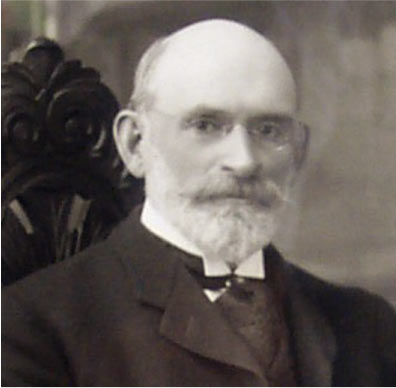
By 1870, public preference for pottery was shifting from the relatively crude yellow ware, abundant at the time, to a more sophisticated whiteware that was being imported from England. East Liverpool City Council offered $5,000 in seed money to someone who would build and operate a pottery for the production of whiteware.
Brothers Homer and Shakespeare Laughlin submitted the winning proposal, and a two-kiln plant was built on the banks of the Ohio River in 1873. The Laughlin Brothers quickly gained a reputation for quality and, in 1876, their white granite ware won an award at the United States Centennial Exposition in Philadelphia. By 1877, Shakespeare was ready to move on. When Shakespeare sold his share to his brother in 1877, The Homer Laughlin China Works was born, and the seeds of The Fiesta Tableware Company were sown.
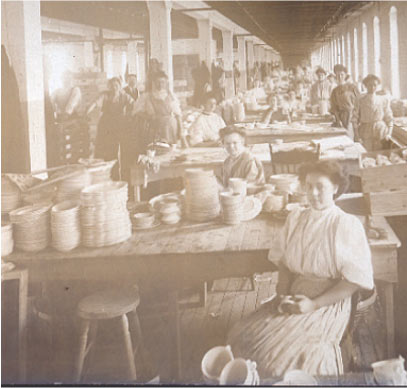
The rechristened Homer Laughlin China Works continued to prosper through the 1880s, becoming one of the better-known china manufacturers in the United States. In 1889, William Edwin Wells, a young bookkeeper from Steubenville, Ohio, was hired to manage the books of the growing establishment. In a short time, Mr. Wells was managing the business and Mr. Laughlin was able to spend time traveling with his wife. Homer Laughlin decided to retire and, in December 1897, sold the business to Mr. Wells and a financial partner from Pittsburgh, Louis I. Aaron.
Spoiler alert: This marked the beginning of the Wells’ leadership role at Homer Laughlin–and five generations later, the family continues to lead The Fiesta Tableware Company.
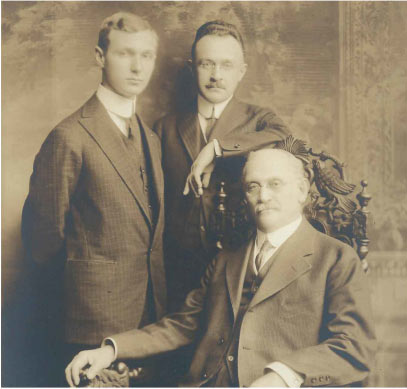
After the sale, growth continued with as much expansion as the East Liverpool site could accommodate. With no more room, the company looked across the Ohio River and purchased land from the Newell family. A subsidiary company was formed to develop the town, which would become Newell, West Virginia.
A suspension bridge was built across the Ohio River, connecting the new community with East Liverpool, and a trolley line was built to transport workers across the river. By 1906, the company constructed Plant #4, which was at the time the largest pottery plant in the world. The company now had a combined production capacity of 300,000 pieces of ware per day (10% of the U. S. production capacity). The company’s headquarters moved to Newell at the beginning of 1907.
Key customers contributing to the company’s rapid growth included retail giant Woolworth's, and—fun fact—the American Cereal Company of Chicago, which packed the company’s oatmeal bowls in Mother’s Oats boxes as fast as Homer Laughlin could produce them.
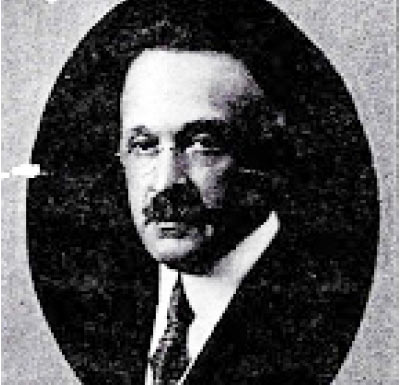
In 1911, Louis Aaron retired, and his son, Marcus Aaron, succeeded him as president. The rapid growth continued and, in 1914, Plant #5 was opened with 16 additional kilns, giving the company a total of 78 ware kilns and 60 decorating kilns. In January 1917, W. E. Wells wrote to the Woolworth Company to recap their business for the year of 1916. He stated “… [T]his is the first time in history that the purchases of any one concern from any one pottery firm have reached the million (dollar) mark in one year.” At an average price of 72 cents per dozen, that means 16.7 million pieces of ware were sold to one customer in one year. And that one million dollars in 1916 would have an equivalent purchasing power today of over $23 million.
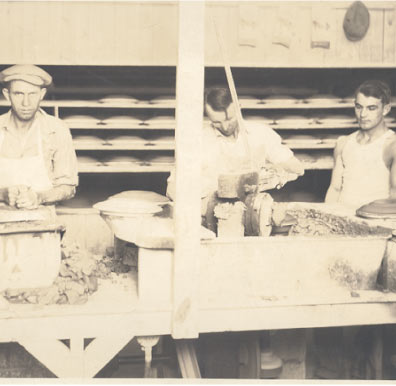
The early 1920s marked the beginning of the most revolutionary change that had ever hit the pottery industry: the introduction of continuous firing tunnel kilns, which offered vastly improved production time. Potteries rushed to build these new kilns; those that couldn’t would become extinct.
Flexing its muscle, in 1923 the company announced it would build a completely new plant, complete with tunnel kilns. Plant #6 fired up in 1924. At about this same time, tunnel kilns were also retrofitted into Plants #4 and #5. In 1927, Plant #7 opened and, in 1929, the largest yet of the company’s plants, Plant #8, was opened. Plant #8 alone had 800 employees, with all production initially allocated to Woolworth’s.
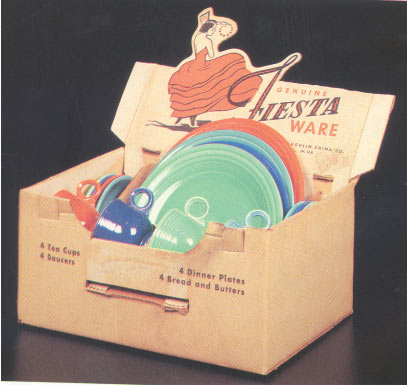
W. E. Wells retired in January 1930. He was replaced as general manager by his eldest son, Joseph M. Wells, Sr. This period also signaled the reign of Frederick Hurten Rhead as design director. Hired in 1927 and holding the post until his death in 1942, Rhead’s contributions to the company are immeasurable. He oversaw the most prolific period of new product introductions in the company’s history. Rhead designed Virginia Rose as well as the several Eggshell shapes. Rhead’s most famous accomplishment, however, was the now-iconic Fiesta®, a true American classic introduced in 1936. Created an answer to the doldrums of the Great Depression, Fiesta® continues to inspire happiness and dinnertime joy with its colorful palette, high gloss, and spectacular shapes.
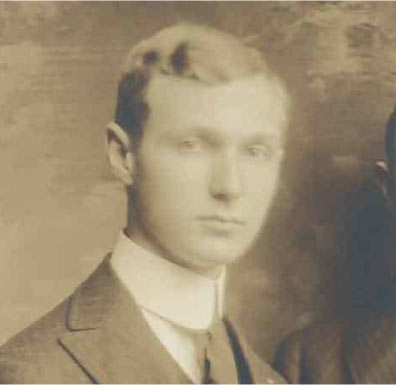
Marcus Aaron retired as president of the company in 1940 and was succeeded by his son, Marcus Lester “M.L.” Aaron, who would serve as president for the next 48 years. With Fiesta® leading the way, the company continued to flourish until the onset of World War II. During the war years, much of production shifted to making china for our armed forces. After the war, production returned to normal, and the company reached its peak production year in 1948. More than 3,000 workers were employed to produce over 10 million dozen (120 million) pieces of ware.
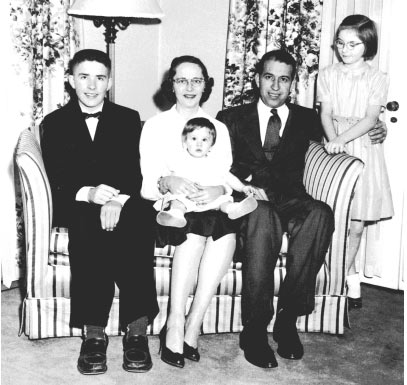
With the 1950s came an increase in the import of cheaply produced, foreign-made dinnerware. This competition took its toll on American potteries, with many not surviving the decade. The company’s management strategically shifted their emphasis from consumer dinnerware to commercial ware for the hotel and restaurant trade. In 1959, the company’s “Best China” brand of vitrified hotel china was introduced. J. M. Wells, Sr. retired at the end of that year, turning over the management of the company to Joe Wells, Jr., who represented the third generation of the Wells family involved in running the business.
The proliferation of a global marketplace continued through the 1960s and 1970s, and low-cost imports flooded the country. Still, Homer Laughlin’s hotel ware was gradually becoming a prominent player in the foodservice industry, eventually overtaking retail dinnerware in sales volume.
Joe Wells, Jr. retired in 1986 and was replaced as executive vice president by his son, Joe Wells III. At the end of 1988, M. L. Aaron retired as company president and was succeeded by his son, Marcus (Pete) Aaron II. The company was now in the hands of the fourth generation of each family.
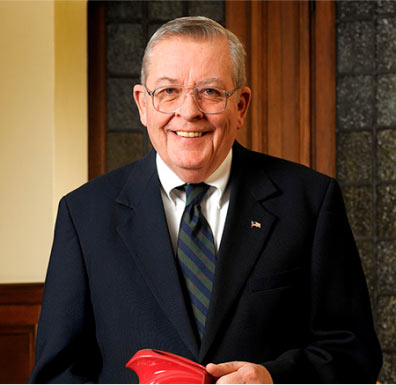
The popularity of Fiesta®, now well into its second generation of setting American tabletops, had reached iconic status. The colorful line stood up to imitators, and its name became synonymous with American-made quality. The Homer Laughlin China Company’s aging factories went through many changes. State-of-the-art computerized kilns were installed throughout Plants #6, #7 and #8. Much-needed new forming and glazing equipment was installed, and a self-contained “plant within a plant” was built at Plant #8. Homer Laughlin was prepared to enter the new millennium as an industry leader.
By 2002, ownership of the company was shared by third-, fourth-, and fifth-generation members of the Wells and Aaron families and others. In an effort to consolidate resources and provide improved direction for the company, Joe Wells III, together with his sisters, Jean Wicks and Elizabeth McIlvain, purchased the interests of the other stockholders. In June, 2002, Joe Wells III was elected president and chief executive officer.
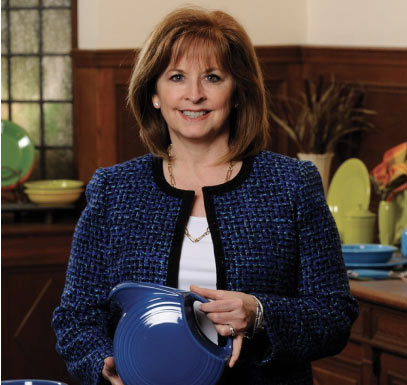
In 2010, Homer Laughlin acquired The Hall China Company, a maker of complementary serveware and completer items. Hall had its plant located across from Newell in East Liverpool, Ohio, making for a homecoming of sorts for the company. Hall China had its own chapter of the American-pottery story. Hall China was founded on August 14, 1903, by Robert Hall who was succeeded a year later by his son Robert Taggart Hall, who is credited with helping to advance the single-fire process of making china. The company’s focus on accessories and specialty items helped separate them from many me-too manufacturers. Color and shape became Hall’s calling card. Today, ask any of the many thousands of Hall China devotees and Hall China Club members how they measure value, and they’ll say, “from the collector's closet to the table.”
Across the river at the Homer Laughlin factory, after leading the company for a decade, Joe Wells stepped down from the top post, and his sister, Liz McIlvain, took over as president in 2012. Her leadership welcomes the first woman president in the company’s history and denotes the first time the presidency was passed between siblings instead of from father to son.

In 2020, The Homer Laughlin China Company took a bold step and returned to its roots, focusing solely on manufacturing dinnerware for the home. In so many ways, the writing was on the walls. The inexpensive imports that started flooding small-town America in the 1950s never really stopped, and always seemed to get less expensive. There seemed to be no bottom. And the foodservice market eventually chased after the popular consumer trend—everything’s disposable.
But a niche in the marketplace, and by no means a small part of the total American market, never stopped wanting three things: 1) quality you can see and feel, 2) a commitment to the American worker, and 3) Fiesta®. Forever popular and colorful Fiesta®.
With that, The Homer Laughlin China and the Hall China brands were acquired by Steelite International. The Homer Laughlin China Company, manufacturer of these brands–and the flagship Fiesta®–was renamed The Fiesta® Tableware Company. The new name defines a quality standard that has never wavered. But the name is distinct from Fiesta® Dinnerware. The new tableware company is free to share with the retail audience–in ways it never could before–lines never before available to consumers.
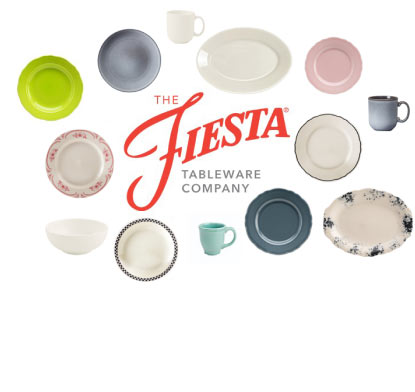
The Fiesta® Tableware Company continues to operate in Newell, West Virginia, as a retail-only tabletop and giftware manufacturer. In addition to the Fiesta® brand, The Fiesta Tableware Company also manufactures and sells tableware designs previously only available to the professional food markets.
Yes, for the first time ever, the whole factory and what it can do and make is open to the retail customer, those loyal home chefs who always knew a better deal was one that would last.
Our lines are conversation starters. The weight of our ware is always a tell-tale sign you are holding something special. The colors and shapes, somehow forever and new.
Pick a color, a shape, an item, or a whole collection. Give a gift or reinvent your own kitchen. Do it now or take your time shopping. We are 150 years old and poised to move forward with the Wells family’s pledge to continue producing quality, American-made dinnerware. And we make that pledge alongside our neighbors–the potters, painters, and other craftspeople of the Ohio Valley.